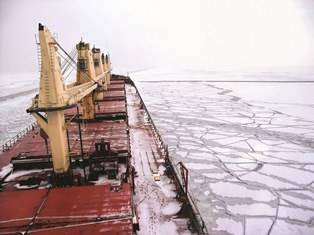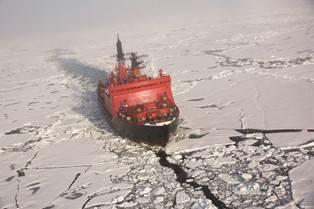The Swedish Club Makes Arctic Trade Safer
According to a new publication issued by the Swedish Club, operators transiting the polar regions are not always fully prepared for the unique challenges that they will face. Yet informing their P&I Club and Underwriter allows the owner to get access to hands-on advice that will reduce their exposure to these increased risks.
As longer ice free summers and increased offshore operations focus attention on the polar regions, transits to and from the arctic ports are set to increase significantly. The commercial attractiveness of these new trading routes has seen yearly transits increase fifteen-fold since 2010, to 60 in 2013. The Swedish Club has acknowledged an increased need to support its members in engaging in this trade with a view of making it as safe as possible.
Yet these routes are like no other, requiring a completely new mindset and an understanding of the importance of the risk assessments and regulations necessary for the success of the voyage. There are a very limited number of polar navigators and few crew with experience of navigating in the polar regions. Consequently, to ensure safe passage The Swedish Club recommends that the ship owner consults their Club/Underwriter to obtain proper advice on the enhanced risks connected with trading in these waters, ensuring they embark upon any voyage as well prepared as possible.
“As summer approaches in the northern hemisphere and operators look to take up the increased opportunities that the opening of the routes offers, it is easy to forget that transiting the polar regions requires a unique set of skills.” says Lars Malm, Director, Strategic Business Development & Client Relationship for The Swedish Club.
“Accident avoidance is key. If a casualty was to occur, assistance would be limited due to the lack of infrastructure, and freezing temperatures can seriously impair the operations of any salvage equipment that can get through, escalating a minor incident into a serious casualty. We are dealing with temperatures as low as -50oC with icebergs as hard as concrete floating in unsurveyed waters.”
The need to address gaps in knowledge and co-ordinate ice data and ice regimes has been identified by The Swedish Club.
“The lack of a coherent ice regimen across the regions also adds to the difficulties,” explains Mr Malm. “For example, at present there are only two Arctic ice-regimes – the Russian and Canadian ice regimes. The Polar Code developed by the IMO is now awaiting ratification, but with the rules that are in force today, a vessel should operate in these areas as if it were sailing under an ice regime.”

















